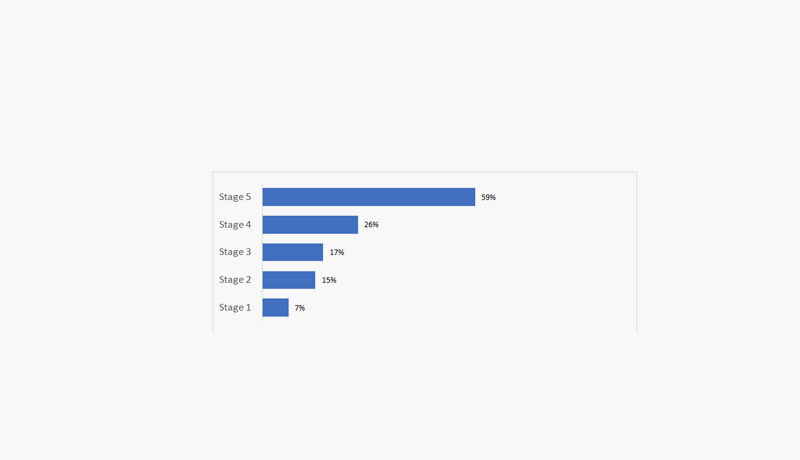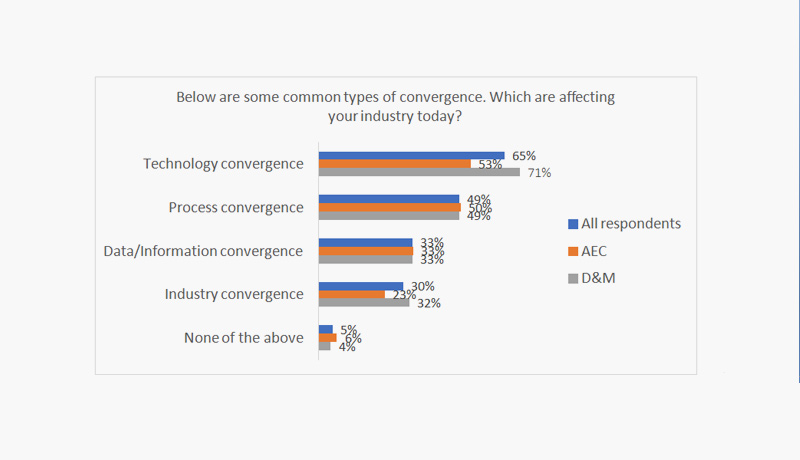
According to a global study initiative conducted by Altimeter and Autodesk, digitally mature organizations are embracing the next wave of digital disruption known as Convergence. Due to the COVID-19 pandemic’s accelerated requirement, innovative methods like as virtual communications, individualized digital engagement, immersive modeling, quick prototyping, and efficient cooperation have become popular.
“Understanding convergence and making it work for your organization is an under-leveraged competitive advantage,” said Alexander Stern, Technology Strategist at Autodesk.
He added, “Process, data, and technology convergence impacts most the internal workings of a company. It’s industry convergence – driven by external forces – where the magic happens. This is when previously disparate industries, or industries that operate in parallel, find ways to collaborate for mutual benefit. This collaboration can take many forms, including partnerships, transactional relationships, or simply shared resources.”
“By assessing their digital maturity, and top investment priorities, companies can use this data to benchmark themselves and chart a roadmap for transformation,” said Charlene Li, Founder and Senior Fellow at Altimeter.
He added, “Doing so can effectively enable businesses to prepare for any type of digital disruption, and even thrive because of it.”
The study, which polled 749 executives from companies in the Architecture, Engineering & Construction (AEC), Design & Manufacturing (D&M), and Media & Entertainment (M&E) industries in the United States, the United Kingdom, Germany, France, Japan, and China, discovered that the pandemic has created two types of businesses:
Convergence is the merging of previously disparate technologies, processes, and data to generate new product, service, and experience combinations that transform industry processes and structures. Convergence is now recognised by most firms as a trend that will affect them in some way. According to the findings, 58 percent of respondents have considered Convergence or recognise it as one of the most important aspects of their organisation. A crucial finding of the study is that digital maturity is a strong predictor of how much a company believes Convergence will affect it.
To determine how digitally mature a company is, respondents were asked to self-select one of the following stages to define their business:
Convergence was cited by 59% of organizations with the highest digital maturity (Stage 5) as one of the most important influences on their business. As maturity levels drop, so does acceptance of Convergence as a disruptive trend. This makes sense, because firms that are less digitally mature are playing catch-up, striving to embrace digital transformation strategies and technologies.
Figure 1: Higher Digital Maturity Stages Are More Likely to See Convergence as a Critical Influence
Chart Subtitle: Percent Who Selected “Convergence is one of the most critical influences on my business”

However, this does not imply that less-mature businesses should put off thinking about and preparing for Convergence until they reach a later stage of digital maturity. In fact, the basis for Convergence must be laid as soon as feasible in order to achieve Stage 5 and realise the benefits of Convergence.
Understanding all of the ways Convergence is happening and identifying the categories that will influence the organisation is the first step toward laying a foundation for digital transformation.
The research revealed four levels of Convergence:
By creating convergence levels, we can chart each type of Convergence’s impact and how it varies by industry.
Figure 2: Technology and Process Convergence Have the Greatest Impact on Industry

While the benefits of Convergence may seem apparent at every stage of digital maturity, many companies face challenges in implementing the steps they need to take in order to fully realize these benefits. Some of the top challenges include:
